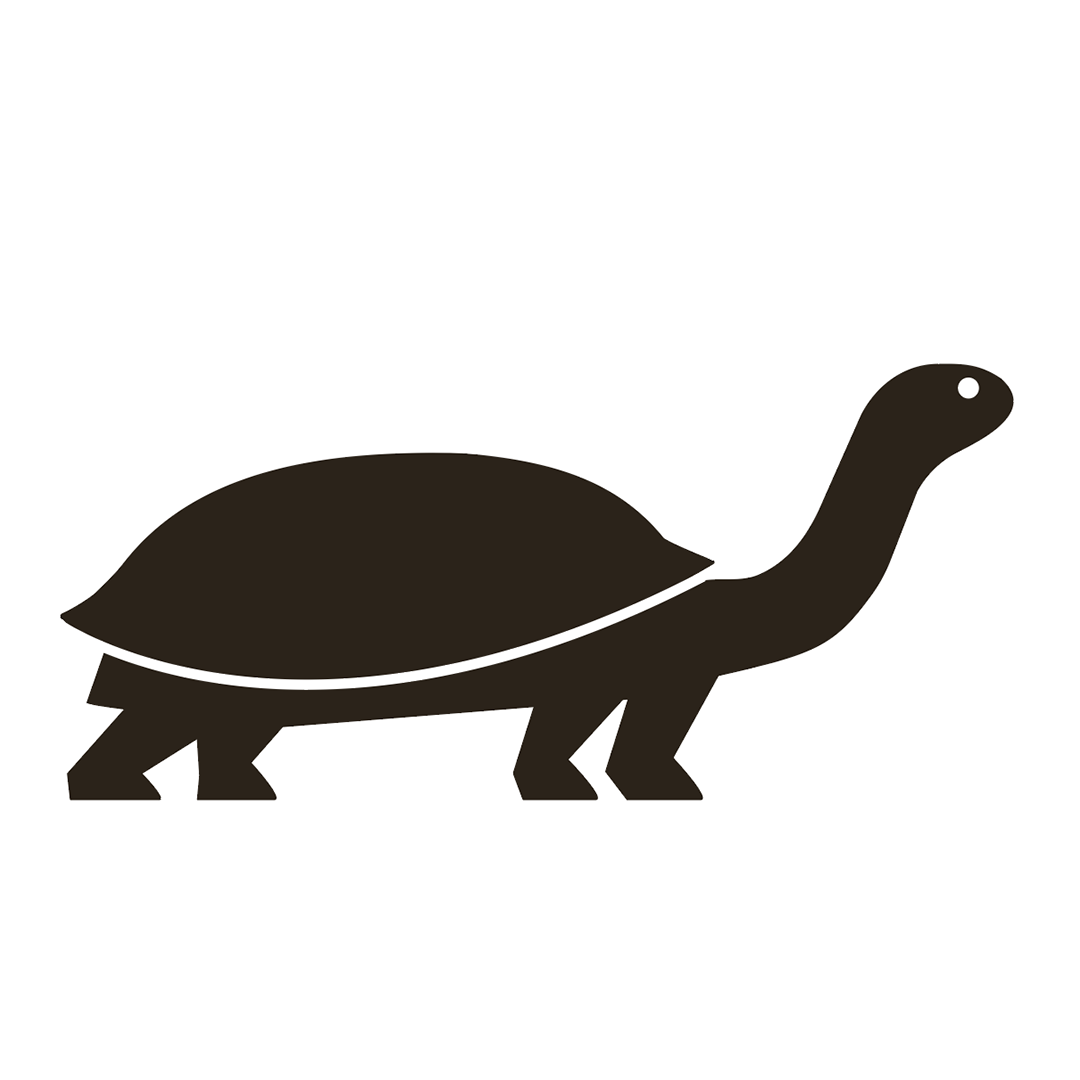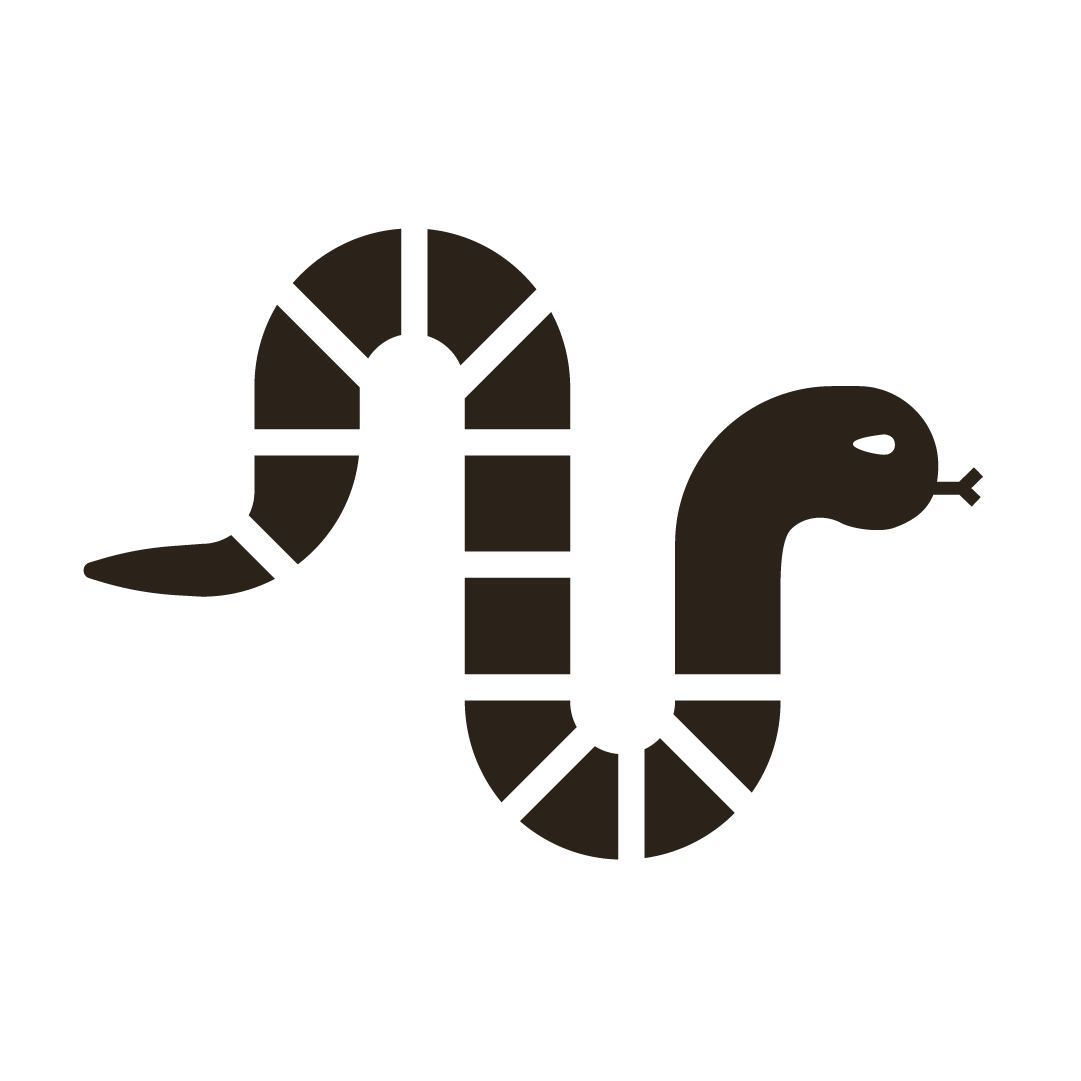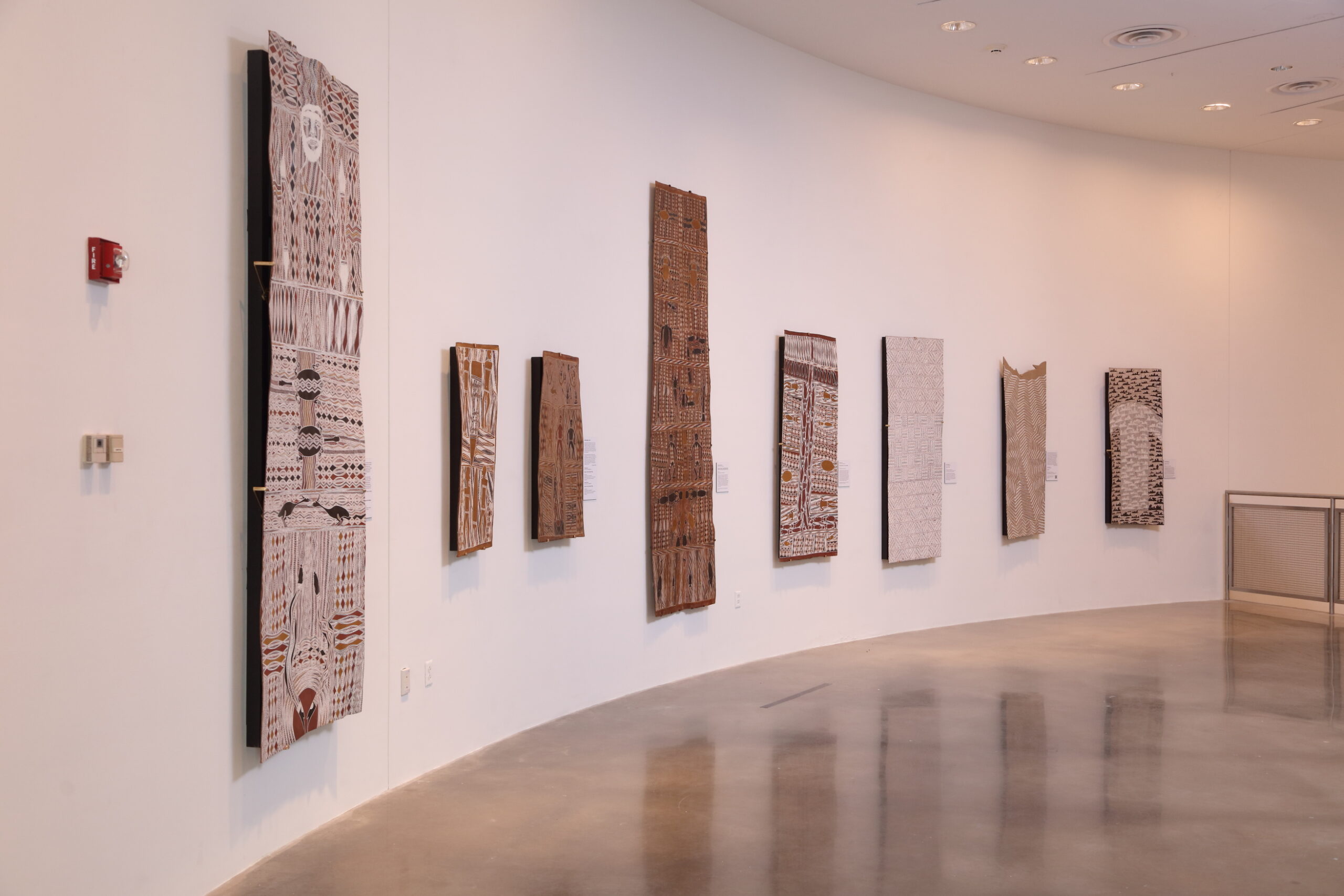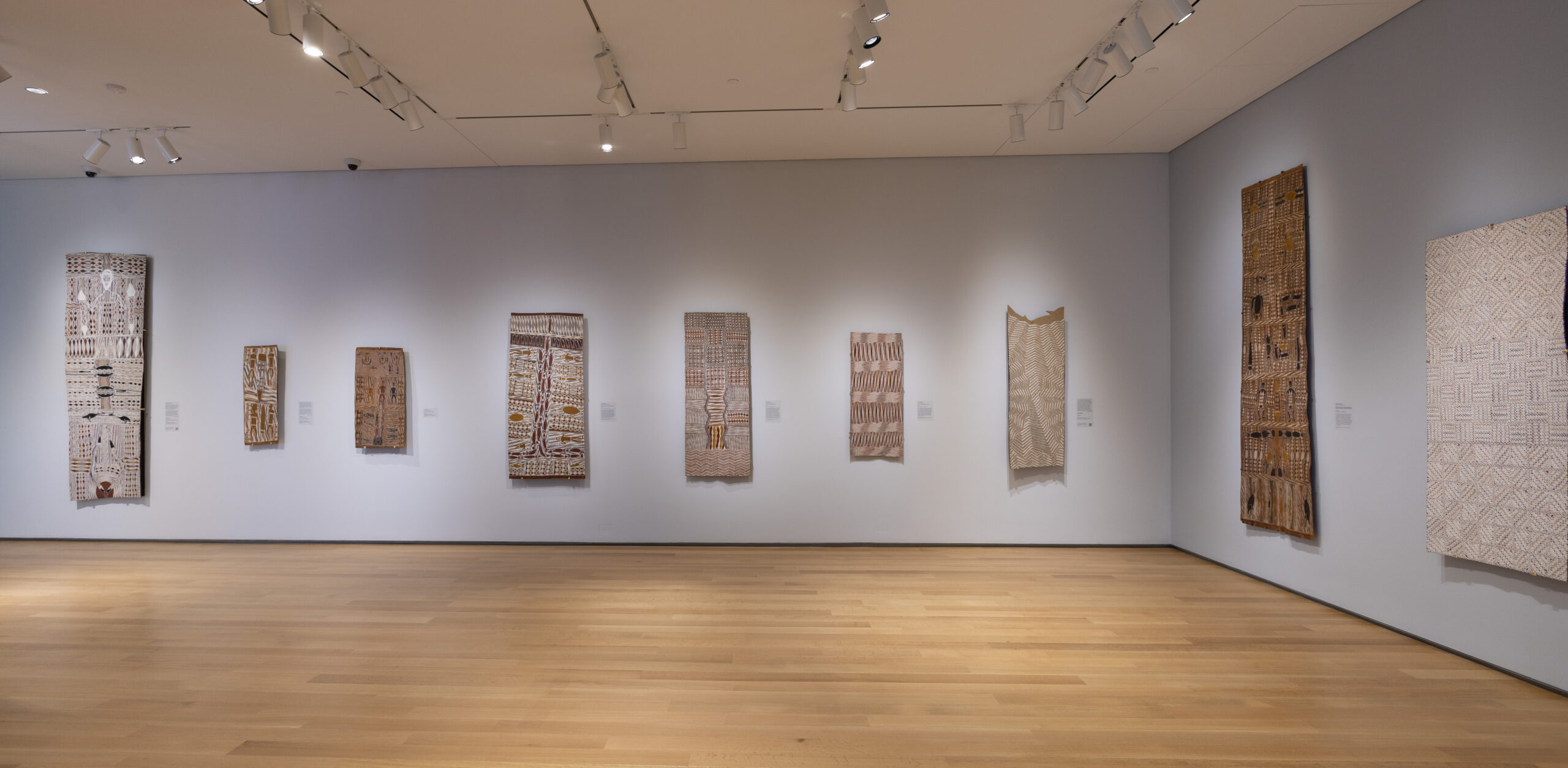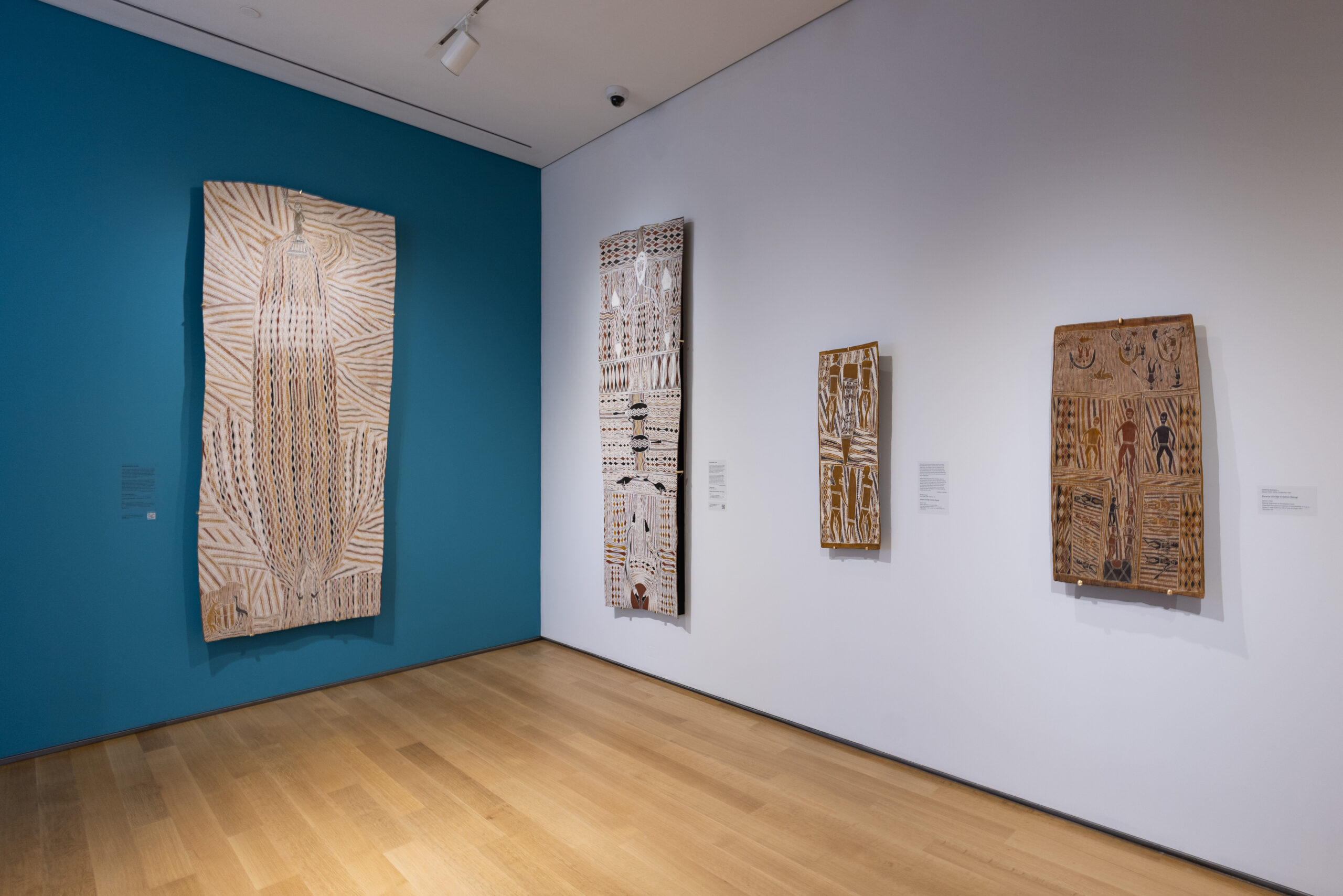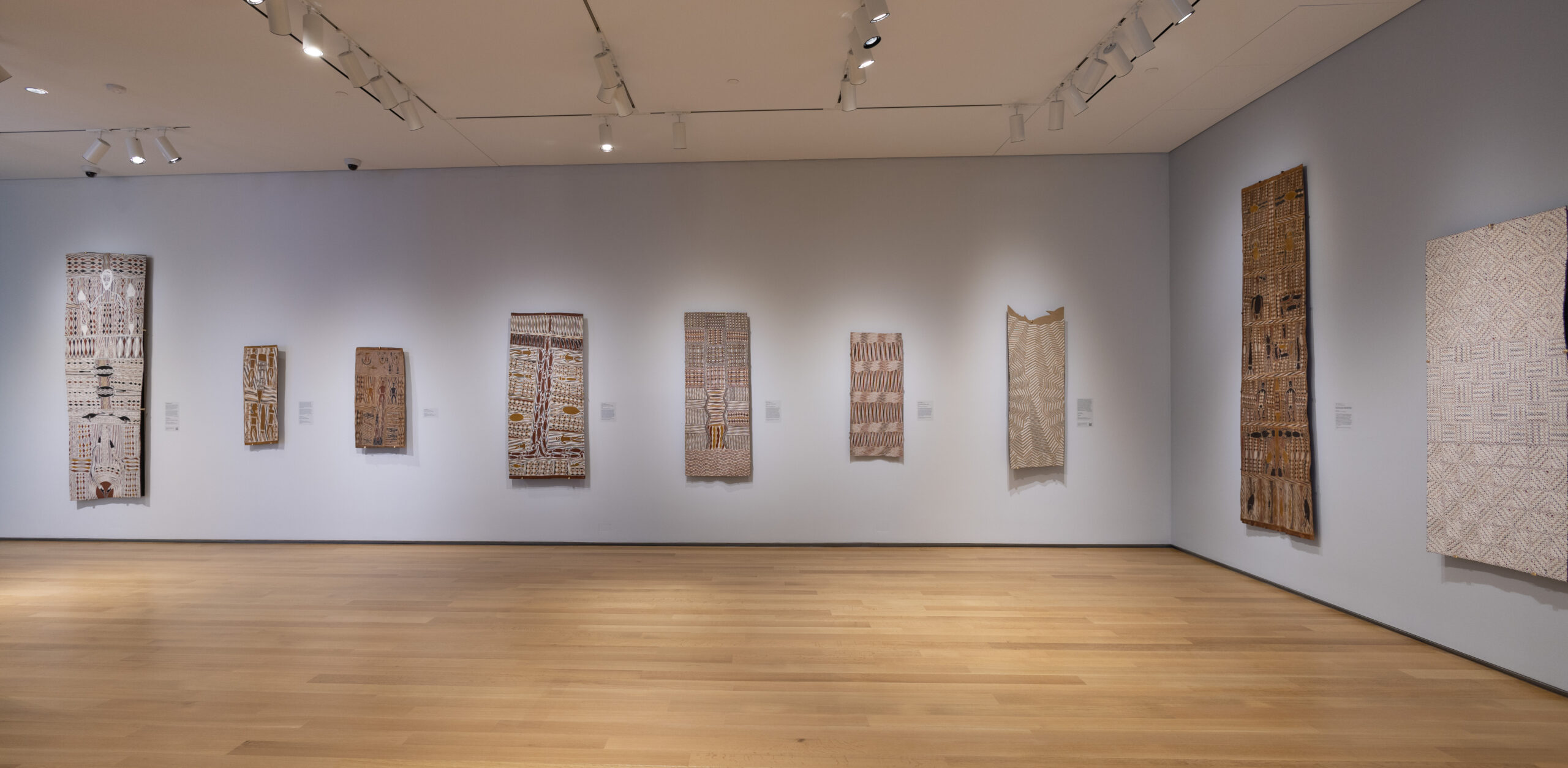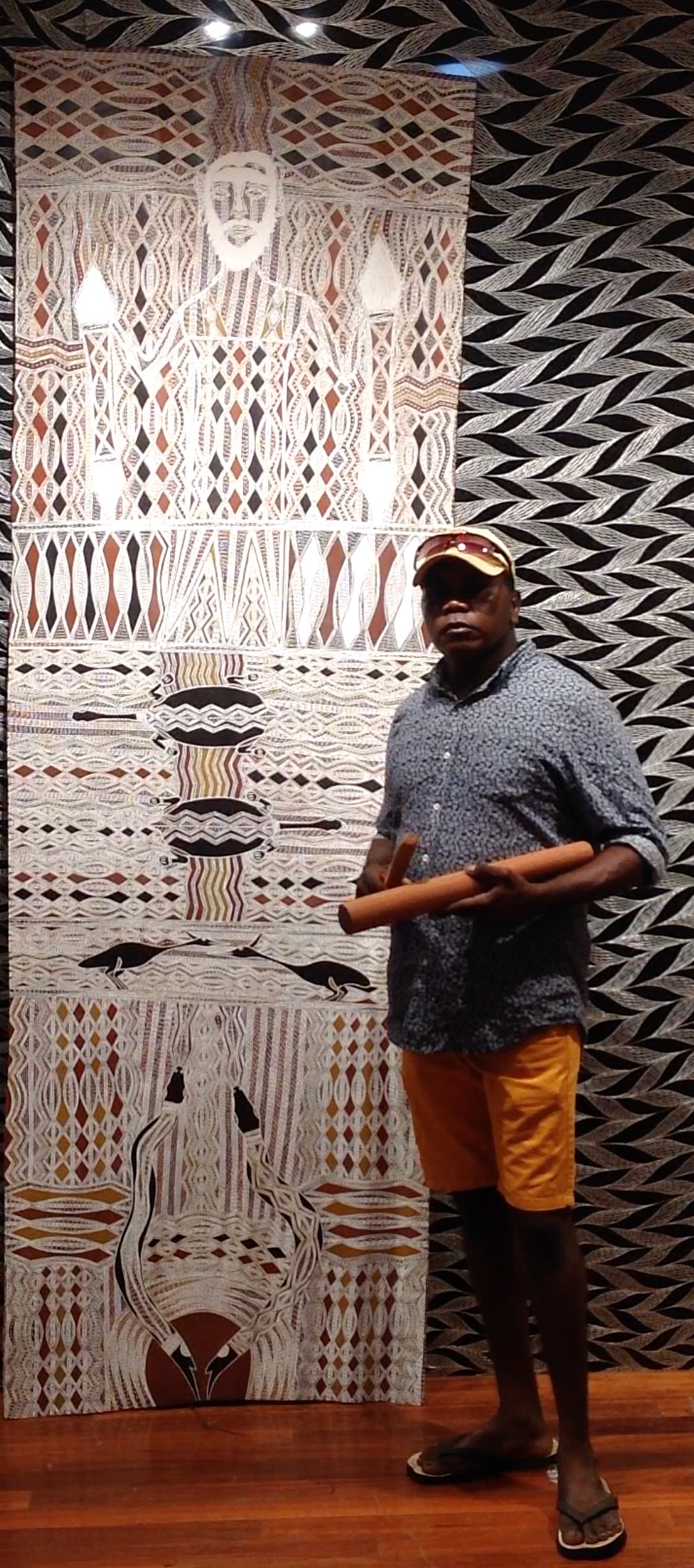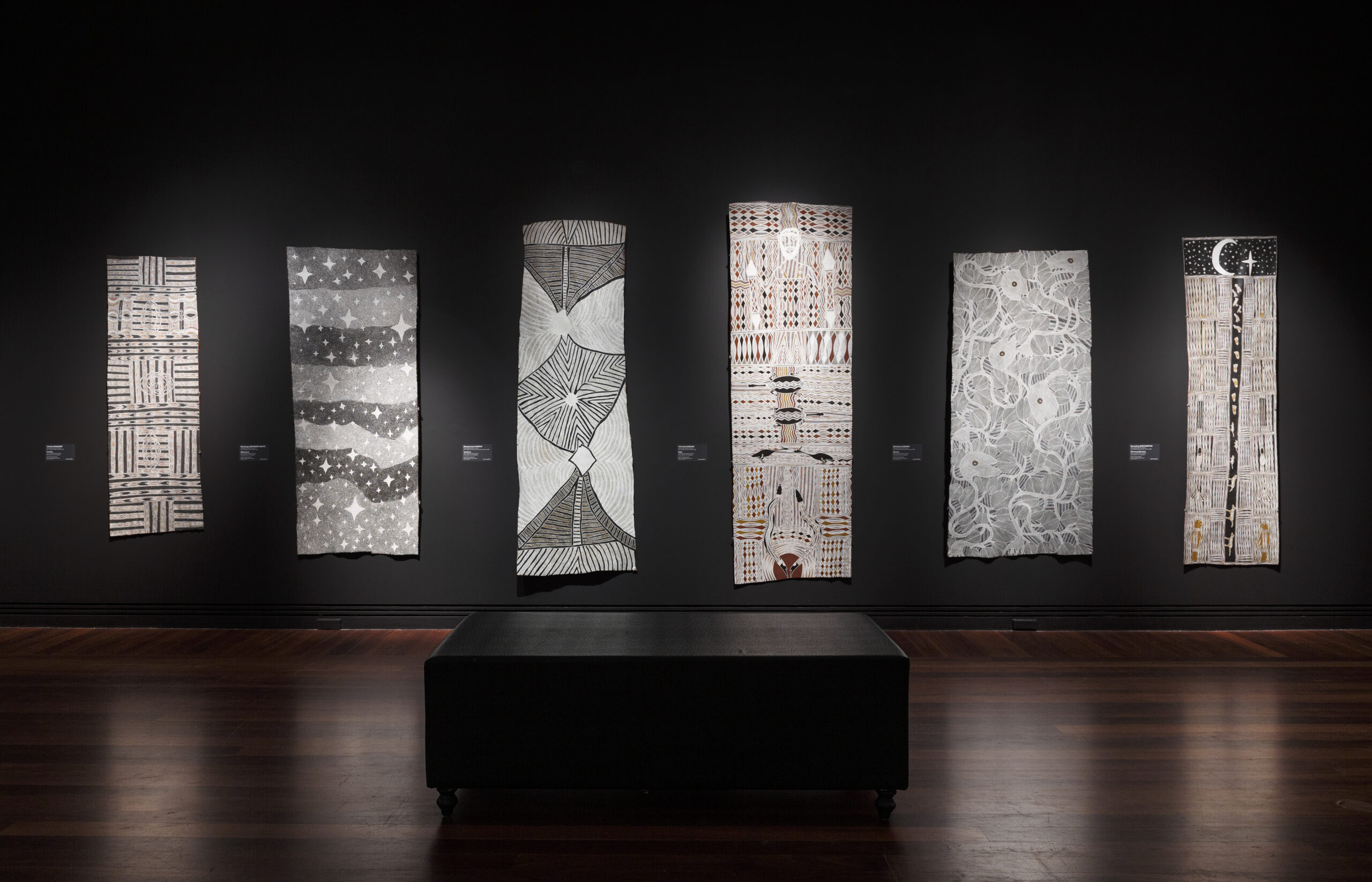
"This painting is very important to our Yolŋu people of the Yirritja moiety, and particularly to my Dhalwaŋu clan. It is about Gäṉgäṉ, a central place for the Yirritja clans, where Barama lived. You can see Barama at the top, the central creator, thinking our Country into being, distributing different sacred objects, Law and ownership to the Yirritja clans. Barama was living in Gäṉgän, and that is how we maintain the Law that he passed on to our ancestors, through our forefathers, for generation after generation. We carry on this legacy of the leadership that Barama laid down in our Country.
And down the bottom, you can see minhala, the long necked turtle. It is an important animal that we sing. It holds a story that has been sung for thousands of years by my people. And then there is gany'tjurr, the heron, looking down to the Gäṉgän waterhole. And you can see the two lightning snakes, burrut’ji, meeting each other, their tongues coming together and communicating to each other, as well as to others across Arnhem Land.
All these patterns are connected to the land and contain deep meanings. The patterns have stories and songlines, and Djirrikay and Dalkarra, which are different forms of diplomacy and different ways of telling the stories. Very deep knowledge from the Dalkarra. We sing through the manikay and we sing through the Dalkarra.
So that is the story of this bark painting. It is a story painted by the old people, and today I put it forward to show the way that we can pass this story on, sending it all around the world. So today, I pass on this story, it is a story that is special to me and my family, but also to other clans. For while the Dhuwa have Djan’kawu, the Yirritja have Barama. It is a different story, a different meaning, and a different ownership."
– YINIMALA GUMANA
More Info
Barama the Ancestral Creator Being directed the instigation of Law for the Yirritja. It is said that during the Waŋarr, the period of the first mornings, after traveling from the coast of Blue Mud Bay, he emerged from a freshwater water source at Gäṉgaṉ. Barama carried a sacred staff symbolic of deep seated knowledge and with weed hanging from his arms and water steaming from his body he strode ashore. Here at Gäṉgaṉ Barama and his disciples performed the initial ceremony for the Yirritja moiety, which was given to the Dhaḻwaŋu clan. From here the Creator Beings traveled to what was to become Yirritja land, giving Law, language, song, dance, totems and maḏayin (sacred things) to the Yolŋu.
This painting has reference to these initial events as it depicts the sacred waters of Gäṉgaṉ and Dhalwaŋu totems that witnessed the first coming. The diamond fields is of the water at Gäṉgaṉ and immediate region, the design manifest of the rivulets of the same as it shed from the body of Barama.
Every season, the systems that feed the mangrove creek of Baraltja (home of Burrut’tji, the Lightning Snake) bring in the new season freshwaters. One source is from the Dhaḻwaŋu clan estates of Gäṉgaṉ, represented by this diamond design. Burrut’tji "tastes” the first freshwater coming downand stands on its tail and spits lightning into the storm. Incoming waters flood first the plains then the mangrove lined creeks that finally empty into the sea.
The serpent has been depicted spitting lightning. This action shows communication between the different lightning snakes of different Yirritja clans located hundreds of miles away which is seen in the lightning. They are located to the east and southwest and this is why the snakes indicate direction in a mirrored way. In ancestral times, Burrut’tji travelled underground to Gäṉgaṉ (homeland of the Dhaḻwaŋu people) and other places far away from his home and into country belonging to other clans including the Maŋgalili.
Burrut’tji is closely associated with the hollow log in mortuary ceremonies. Burrut’tji and his home are most sacred aspects of the ceremony which would be conducted only by elder men. Women would not be able to enter the area of the ceremonial ground used to represent Burrut’tji’s home - the journey of the spirit of the deceased Maḏarrpa person begins from this site. In the less restricted sections of this story, both men and women dance the fish, birds, mangrove leaves, fish trap, dogs, tide lines and other elements and tell the same story through song and dance. In summary, the diamond based field which includes an elliptical shape is the muddied freshwater of the Dhaḻwaŋu clan downstream from Gäṉgaṉ. The conception that this
flows out through Baraltja (a small mangrove creek in a different watercouse) is actually technically possible at the time of wet season inundation of the floodplains behind the mangroves where an expanse of water up to 20 miles long can exist connecting the two. But the real connection being mapped is that between the Dhaḻwaŋu and their mother’s mothers, the Maḏarrpa clan. The artist said that Burrut’tji has a place at Gäṉgaṉ and this site mirrors the Maḏarrpa one at Baraltja, side by side.
– Buku-Larrŋgay Mulka Centre
Additional Information
Decade
2019
Medium
Natural pigments on eucalyptus bark
Dimensions (IN)
101 3/16 x 33 15/32
Dimensions (CM)
257 x 85
Credit
Kluge-Ruhe Aboriginal Art Collection of the University of Virginia.
The 2017-19 Kluge-Ruhe Maḏayin Commission.
Purchased with funds provided by Margo Smith and Tom Cogill, 2023.
Narrative
Dhaḻwaŋu
The Dhaḻwaŋu clan belongs to the Yirritja moiety. The most important Dhaḻwaŋu songlines relate to...
Songline
Barama and Lany’tjung
There were three ancestral beings: Barama, Lany’tjun and Galparrimun. Barama came from the place called...
Songline
Burrut’tji | Lightning Snakes
Burrut’tji is the name for Lightning Snakes. There are several Lightning Snakes, belonging to different...
Location
2010s
The 2010s saw Buku-Larrŋgay Mulka go from strength to strength. At the National Aboriginal and...
About The Artist(s)
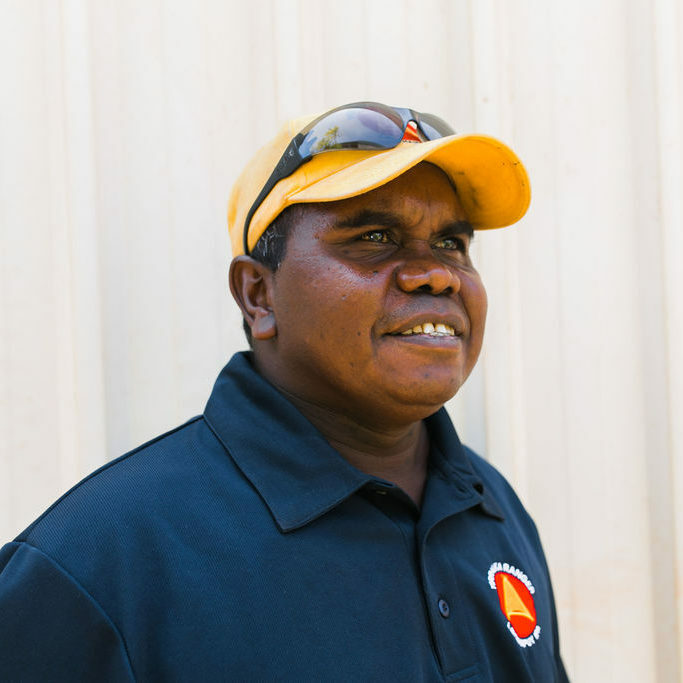
Clan
Dhaḻwaŋu
Artist Dates
Born 1982
Yinimala Gumana
Yinimala Gumana is an important young leader of the Dhaḻwaŋu clan. The son of Dhäkuwal Gumana, Yinimala was raised by his father’s brother, Gawirriṉ Gumana, after Dhäkuwal’s death. Yinimala assisted his adopted father with many of his works before emerging as an artist in his own right in 2004. In 2011 he was elected chair of Buku-Larrnggay Mulka. Since 2017, he has been one of the lead curators of Maḏayin: Eight Deacades of Aboriginal Australian Bark Painting from Yirrkala.
Collections Represented
Kluge-Ruhe Aboriginal Art Collection of the University of Virginia
Museum and Art Gallery of the Northern Territory

